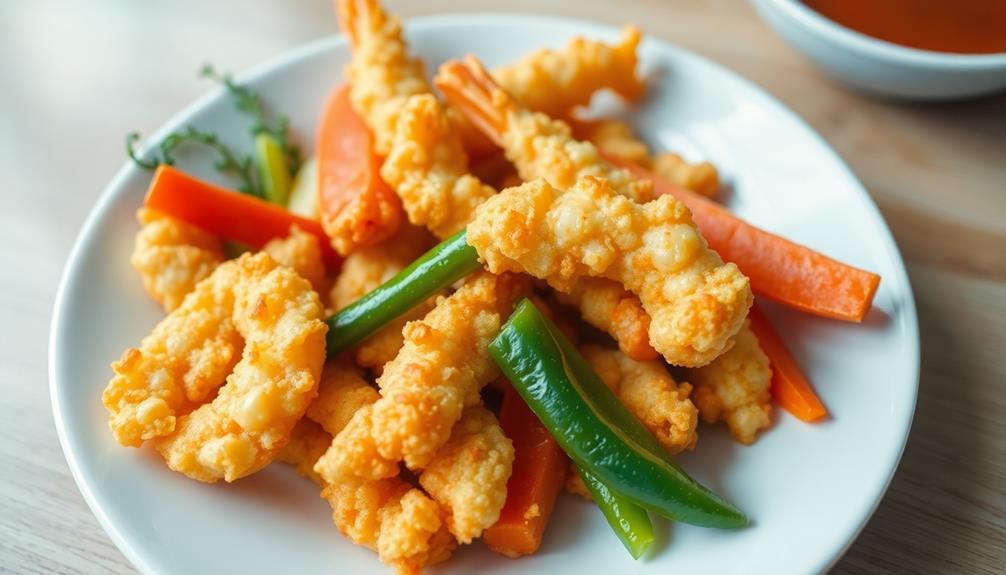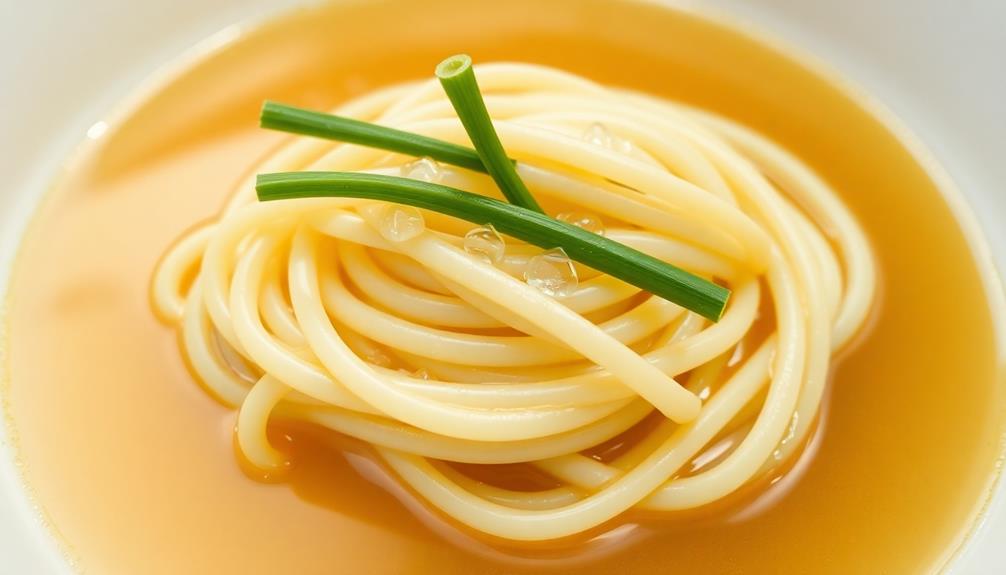You've likely enjoyed the unique flavors of tsukemono before, even if you didn't know the name. These traditional Japanese pickled vegetables hold a fascinating history and offer more than just a tasty accompaniment to meals. From their origins as a preservation method to the diverse regional varieties, there's plenty to uncover about this staple of Japanese cuisine. Dive in, and you'll discover how these colorful, probiotic-rich pickles can elevate your cooking and palate in unexpected ways. Aside from their delicious taste, tsukemono also offer a range of health benefits. Many of the pickled vegetables are rich in probiotics, which can aid in digestion and support immune health. Some varieties, such as those made with natto, can also provide additional natto health benefits, including helping to improve blood circulation and promoting heart health. So, the next time you reach for some tsukemono, remember that you’re not just enjoying a flavorful side dish, but also giving your body a boost of essential nutrients.
Key Takeaways
- Tsukemono originated in Japan as a way to preserve seasonal produce and has evolved into a cultural staple, often served as a side dish.
- The preparation of tsukemono involves salting, rinsing, and drying vegetables before pickling them in a brine solution.
- Successful lacto-fermentation of tsukemono is indicated by bubbles and cloudy brine, and refrigeration slows down the process.
- Tsukemono can be enjoyed in various ways, such as a side dish, topping, or incorporated into recipes, and it enhances the taste of different cuisines.
- Tsukemono is rich in probiotics, essential vitamins, and minerals, making it a healthy snack option that contributes to nutritional balance.
History
When did the art of pickling vegetables begin in Japan? Tsukemono, the traditional Japanese pickling technique, has a rich history dating back centuries.
Originating from the need to preserve seasonal produce, the practice of tsukemono evolved over time, becoming an integral part of Japanese cuisine and culture.
The earliest records of tsukemono date back to the 8th century, where pickled vegetables were mentioned in ancient texts. As Buddhism spread throughout Japan, the practice of pickling gained popularity, as it aligned with the Buddhist principles of minimizing food waste.
Over the centuries, different regional styles and flavors emerged, reflecting the diverse agricultural landscapes of the Japanese archipelago.
Today, tsukemono remains a beloved aspect of Japanese meals, offering a refreshing contrast to the delicate flavors of rice, fish, and other dishes.
From the familiar takuan (pickled daikon radish) to the unique umeboshi (pickled plums), these flavorful preserves continue to captivate the palates of both Japanese and global food enthusiasts.
Recipe
Tsukemono, or Japanese pickled vegetables, are a delightful and versatile side dish that can accompany a wide variety of meals. These tangy, crunchy pickles are a staple in Japanese cuisine, offering a perfect balance of flavors to complement the main dish.
The process of making tsukemono is relatively simple, allowing home cooks to create their own unique variations using a variety of fresh vegetables. The key to a successful batch lies in the careful selection and preparation of the vegetables, as well as the careful control of the pickling process.
Ingredients:
- 2 cups mixed vegetables (such as cucumbers, carrots, radishes, or cabbage)
- 1/4 cup rice vinegar
- 2 tablespoons white sugar
- 1 teaspoon salt
- 1 teaspoon sesame seeds (optional)
Instructions:
Thinly slice or julienne the mixed vegetables and place them in a non-reactive container, such as a glass jar or a ceramic bowl.
In a separate bowl, whisk together the rice vinegar, sugar, and salt until the sugar and salt have dissolved.
Pour the pickling mixture over the vegetables, ensuring they're fully submerged.
Cover the container and refrigerate for at least 2 hours, or up to 1 week, for the flavors to develop.
When ready to serve, you can sprinkle the tsukemono with toasted sesame seeds for an extra layer of flavor and crunch.
Tsukemono can be enjoyed as a side dish, a palate cleanser, or even as a topping for rice bowls and other dishes.
The longer the vegetables pickle, the more intense the flavor will become, so feel free to experiment with your desired level of tanginess.
Cooking Steps
First, prep your veggies by slicing or chopping them to your desired size.
Next, make a brine solution with salt and water, then pack the veggies into a container.
Step 1. Prepare the Vegetables

Before you can create the delightful tsukemono, you'll need to prepare the vegetables. Start by thoroughly washing and trimming the vegetables. Remove any blemishes or tough ends, then slice or cut them into the desired shapes and sizes.
For crisper pickles, choose firm vegetables like cucumbers, carrots, or daikon radish. Softer veggies, like eggplant or cabbage, will result in a more tender texture.
Once the vegetables are prepped, it's time to salt them. Sprinkle salt evenly over the sliced or chopped pieces, then let them sit for 30 minutes to an hour. This step helps draw out excess moisture, ensuring your pickles achieve the perfect crunch.
Gently rinse the salted veggies and pat them dry before moving on to the pickling process. With your fresh, well-prepared ingredients, you're now ready to begin the flavorful journey of creating traditional tsukemono.
Step 2. Prepare Brine Solution
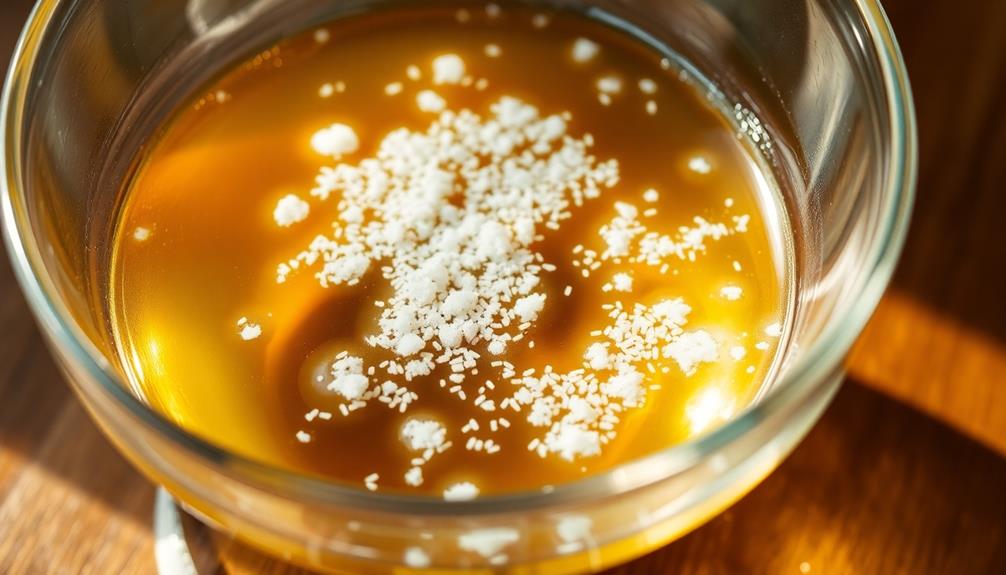
To create the perfect brine solution for your tsukemono, you'll need a few simple ingredients. Start by combining water, rice vinegar, and granulated sugar in a saucepan.
Bringing the mixture to a boil, stirring occasionally until the sugar dissolves completely, ensures a well-balanced flavor. For an added twist, consider incorporating Exotic Fruit Blend Inspirations for Refreshing Drinks to elevate the taste profile.
Once it's boiling, remove the pan from heat and let the brine cool to room temperature.
Next, stir in some salt until it's fully dissolved. The ideal ratio is 1 tablespoon of salt per 1 cup of liquid. Adjust the amount to suit your personal taste preferences. For a deeper flavor, you can also add sliced ginger, garlic, or other aromatic ingredients to the brine.
Once the brine is ready, it's time to pour it over your prepared vegetables. Make sure the veggies are fully submerged, then cover and refrigerate for at least a few hours, or up to a few weeks, depending on the type of pickles you're making.
Enjoy your homemade tsukemono!
Step 3. Pack Vegetables in Container
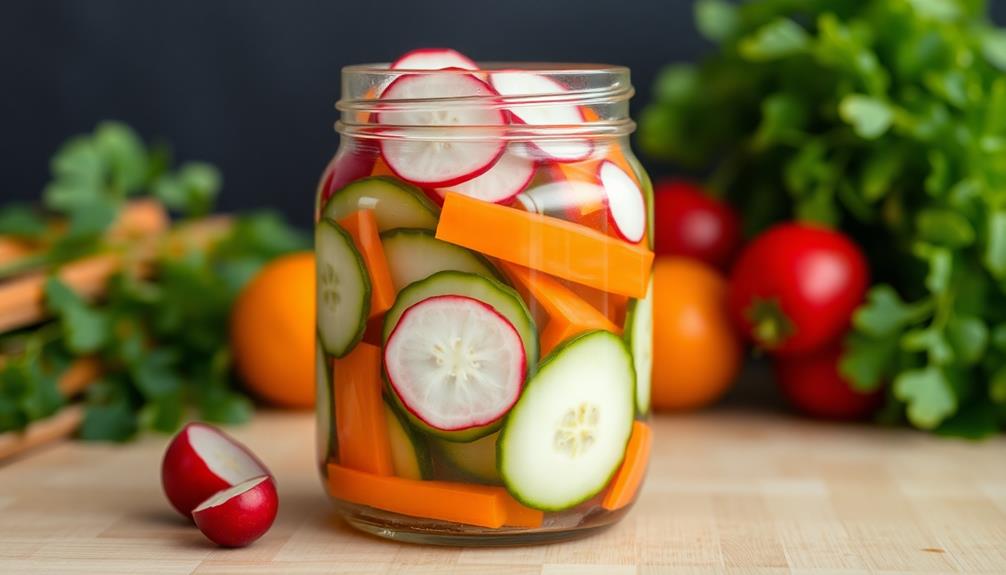
Once the brine is ready, select a suitable non-reactive container, such as a glass jar or ceramic bowl, to pack your prepared vegetables.
Carefully arrange the vegetables, ensuring they fit snugly without overcrowding. Pour the brine over the vegetables, making sure they're fully submerged. If needed, place a weight, such as a small plate or lid, on top to keep the vegetables submerged.
Seal the container and label it with the contents and date.
Store the pickled vegetables in a cool, dark place, like a pantry or refrigerator, for the recommended fermentation time, usually several weeks.
Check on the container periodically, removing any scum or mold that may form on the surface.
Once the desired flavor and texture are achieved, you can transfer the pickled vegetables to the refrigerator for longer-term storage.
Enjoy your homemade tsukemono as a flavorful condiment or side dish!
Step 4. Ferment for Desired Timeframe
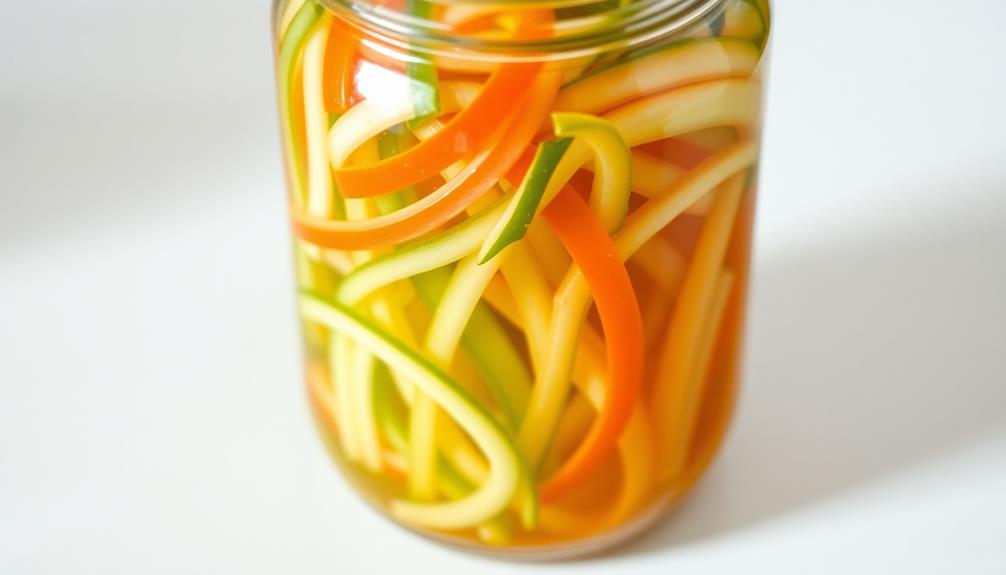
After packing the vegetables in the container, it's time to let the fermentation process begin.
Cover the container with a lid or cloth, and let it sit at room temperature for the desired fermentation time. This could be anywhere from a few days to a few weeks, depending on the type of vegetables and the flavor you're going for.
As the vegetables ferment, you'll start to see bubbles forming and the brine becoming cloudy. This is a good sign – it means the lacto-fermentation is happening!
Give the container a gentle stir or shake every few days to ensure even fermentation.
Once the vegetables have reached your preferred level of tanginess and crunch, it's time to move them to the refrigerator.
This will slow down the fermentation process and help preserve the pickles. Enjoy your homemade tsukemono as a tasty and probiotic-rich side dish!
Step 5. Enjoy Pickled Vegetables

When your tsukemono pickles have reached the desired flavor and texture, you can start enjoying them. Firstly, give the pickles a quick rinse to remove any surface brine. Then, slice or chop them into bite-sized pieces, depending on your preference. You can serve the pickles as a side dish, topping, or even incorporate them into other recipes.
For a simple side, arrange the pickled vegetables on a plate and drizzle them with a bit of the pickling liquid. This will enhance their tangy flavor. Alternatively, sprinkle them over steamed rice, noodle dishes, or salads for a crunchy, flavor-packed addition.
To incorporate tsukemono into a recipe, try adding them to omelets, sandwiches, or stir-fries. The pickles' salty-sour notes will balance out the other ingredients beautifully.
Experiment with different combinations to discover your favorite ways to enjoy these delightful Japanese pickles.
Final Thoughts
Tsukemono, the art of pickled vegetables, offers a world of flavors and health benefits that are worth exploring. From the crunchy cabbage of sauerkraut to the tangy daikon of takuan, these preserves can enliven any meal.
Their vibrant colors and unique textures add visual appeal and a satisfying bite. Best of all, tsukemono are packed with probiotics, vitamins, and minerals that support a healthy gut and overall well-being.
As you continue your pickled vegetable journey, don't be afraid to experiment. Try different vegetables, spices, and vinegar blends to find your personal favorites.
Serve them alongside rice dishes, grilled meats, or as a refreshing snack. Tsukemono can even be used in creative recipes, adding a flavorful twist to everything from salads to sandwiches.
Whether you're a longtime enthusiast or new to the world of pickles, the versatility and health benefits of these preserved veggies make them a delightful addition to any kitchen.



